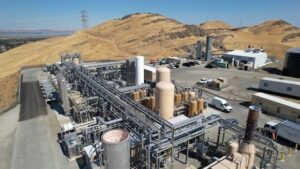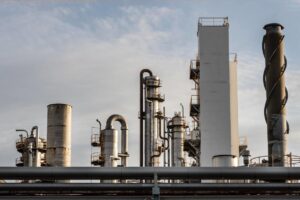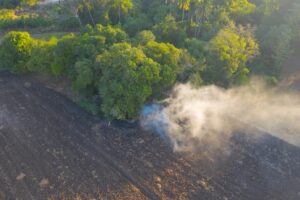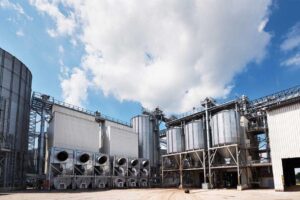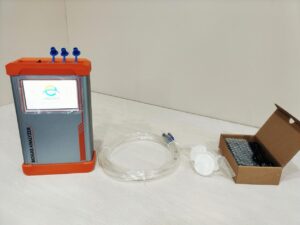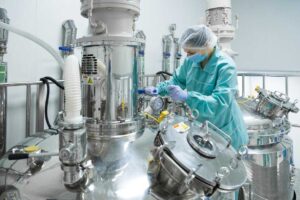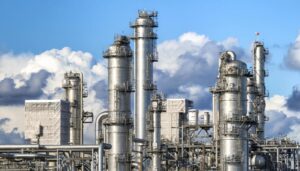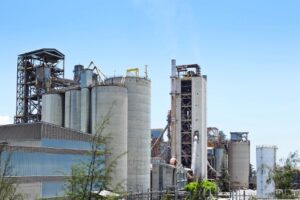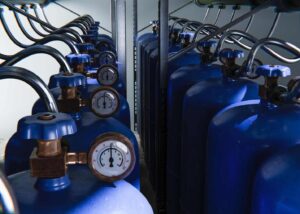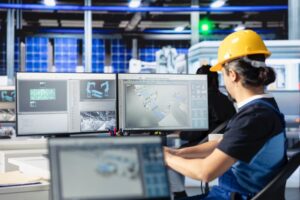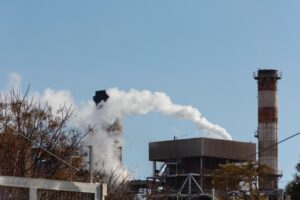As ecosystems across the globe accelerate their release of carbon through increasingly warm soils, researchers and field technicians are confronted with a pressing problem: traditional measurement systems for soil respiration often suffer from slow response, limited gas‑species capability, and cumbersome sampling setups. When you’re trying to quantify simultaneous fluxes of CO₂, CH₄ and N₂O in a fragile environment, the lag from sampling to lab analysis, the need for multiple instruments, and the challenge of field portability all create major headwinds. The pain is real—and the solution lies in upgraded instrumentation for better data fidelity.
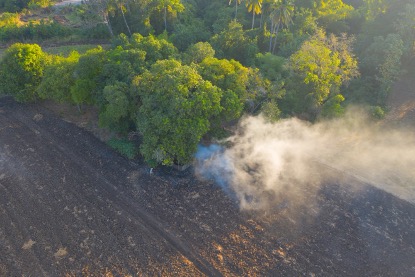
Portable gas analyzers provide high‑accuracy, real‑time CO₂ and CH₄ measurement capabilities that significantly improve soil respiration monitoring in ecological and agricultural studies.
While that statement conveys the value, the key questions remain: how exactly does this technology solve the field problems, what features make it ideal for soil respiration systems, and how should users integrate it into monitoring workflows? The following sections explore this in detail.
Why Is Soil Respiration Monitoring Critical for Climate and Agriculture?
Soil respiration is the process through which carbon dioxide (CO₂) and other gases are released from the soil surface into the atmosphere. It is a result of microbial activity, root metabolism, and chemical decomposition of organic matter. While often overlooked, this process is one of the largest sources of greenhouse gas emissions on Earth—second only to anthropogenic fossil fuel combustion. It is estimated that soils globally release more than 60 gigatons of CO₂ per year, making them both a carbon source and a potential carbon sink, depending on how they are managed.

From a climate science perspective, understanding the magnitude and variability of soil respiration is essential for carbon cycle modelling and climate forecasting. A small change in soil respiration rates—due to warming, drought, land-use change or agriculture—can tip the balance of an entire regional carbon budget. As climate policy becomes increasingly quantitative and accountability-focused, robust data from soil systems is vital for accurate emissions reporting and national GHG inventories.
In agriculture, the stakes are equally high. Soil respiration directly reflects biological activity, nutrient cycling, and soil health. Elevated CO₂ emissions may indicate over-fertilisation or high microbial turnover, while low respiration could signal degraded soils or suppressed biological function. Measuring soil respiration helps farmers and agronomists understand the effect of practices like tillage, cover cropping, irrigation, and fertilisation on soil carbon dynamics.
Furthermore, with global efforts to promote carbon sequestration in soils through regenerative agriculture and carbon credit schemes, accurate and consistent monitoring of soil CO₂ flux is now a functional requirement. Field-deployable tools that can capture respiration data under real conditions—diurnally, seasonally, and spatially—are increasingly in demand. This is where portable gas analyzers become essential instruments in both ecological research and agricultural carbon management strategies.
What Are the Limitations of Traditional Soil Gas Monitoring Methods?
- Many conventional techniques rely on static soil chambers with periodic gas sampling, followed by off‑site laboratory analysis. This introduces delays, reduces temporal resolution, and limits real‑time gas analysiscapability.
- Single‑sensor devices (e.g., CO₂ only) cannot capture the full spectrum of flux gases (such as CH₄, N₂O) required for robust ecosystem monitoring. This hampers multi‑component detection and leaves gaps in the data.
- Field operations are often challenged by bulky instrumentation, high power requirements, and logistical complexity—making mobile monitoring difficult in remote or rugged terrains such as forest floors, agricultural plots or wetland sites.
- Data integration for long‑term monitoring, audit trails, and regulatory frameworks is often lacking, limiting the utility of instruments for environmental compliance and emissions reporting.
How Do Portable Gas Analyzers Improve Soil Respiration Measurements?
When an instrument is designed for field portability, broad‑spectrum detection and rapid responsiveness, it shifts soil respiration monitoring from static snapshots to dynamic, high‑resolution flux datasets. The ESEGAS Portable FTIR Gas Analyzer exemplifies this.
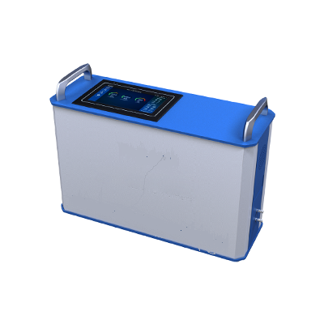
- FTIR technology at its core: The ESE‑FTIR‑100P uses Fourier Transform Infrared spectroscopy to scan a broad spectral range (900‑5000 cm‑1) and identify multiple gas species based on their absorption signatures. Esegas+1
- Multi‑component detection: It can simultaneously measure gases like SO₂, NOx (NO, NO₂), CH₄, HCl, HF, CO, CO₂, O₂, H₂O and (via extension) N₂O, SO₃ and various VOCs. Esegas For soil respiration systems, this means capturing CO₂ and CH₄ in one deployment, rather than using separate analyzers.
- High sensitivity and quick response: The instrument features a detection limit of <0.5 ppm, a response time of <120 s (T90) for sampling. Esegas+1 This enables near‑real‑time monitoring of flux changes when paired with soil chamber systems.
- Portability and field‑readiness: With dimensions of 395 × 170 × 345 mm and weight <15 kg (plus ~4 kg for sampler & pipeline), the unit is genuinely portable for field deployment. Esegas Its built‑in pump and moderate power requirement enhance mobile monitoring feasibility.
- Data integration and workflow: The analyzer provides USB, RS232, RS485 communication interfaces for data export and integration. Esegas This supports emissions reporting and long‑term dataset archiving – beneficial for ecological studies and compliance frameworks.
Together, these features elevate soil respiration measurement systems by enabling continuous or near‑continuous monitoring, reducing instrument changeovers, and generating richer, temporally resolved datasets.
Which Gases Can Be Monitored in Soil Systems Using Portable Analyzers?
In the context of soil respiration, the relevant gases include:
- CO₂ (Carbon Dioxide): A dominant component of soil respiration flux. The ESE‑FTIR‑100P supports CO₂up to 30 % vol (customisable) in its spec sheet. Esegas
- CH₄ (Methane): Critical in wetlands, peatlands, rice paddies, and other anaerobic soils. The instrument supports CH₄ range up to 0‑500 ppm (customisable). Esegas
- N₂O (Nitrous Oxide): While not listed as standard, the spec indicates extension to N₂O is possible. Esegas
- O₂, H₂O and minor gases: Useful context measurements for soil respiration systems to track oxygen depletion or moisture‐related flux variations.
By enabling real‑time gas analysis across multiple species, soil chambers can be outfitted with the analyzer to capture transient flux events (e.g., after rainfall, temperature shifts, disturbance) that traditional methods would miss.
How Are Portable Gas Analyzers Integrated into Automated Soil Chambers?
For practical deployment in soil respiration systems, the process typically involves:
- A sealed soil chamber placed on a soil surface or inserted to a defined depth.
- A sample line connecting the chamber to the analyzer (in this case the ESE‑FTIR‑100P) via its built‑in pump to draw gas through its white‑cell gas chamber with adjustable optical path. Esegas
- Scheduled or event‑triggered sampling—e.g., every 10 minutes, or upon rainfall—where the analyzer provides multi‑component detection in under 2 minutes.
- Data streaming via RS485/USB to a field logger or cloud platform for trend analysis, enabling continuous monitoring and mobile monitoring setups even with remote stations.
- Integration into an emissions reporting workflow where fluxes (e.g., g C m⁻² h⁻¹) are calculated from concentration changes and chamber volume/flow rates, supporting carbon budgeting or ecological compliance protocols.
- Maintenance protocols are simplified given the analyzer’s fast preheating, independent core components and low maintenance cost. Esegas
With this integration, soil respiration studies transition from manual grabs to automated, high‑resolution datasets enabling better modelling of ecosystem response under climate change.
What Features Should You Look for in a Soil Respiration Gas Analyzer?
When selecting a portable analyzer for soil flux systems, ensure the following:
- Ability for multi‑component detection (especially CO₂, CH₄, and optionally N₂O)
- Rapid response time (<2 minutes) and low detection limits (<1 ppm) for dynamic flux capture
- Portability: <20 kg weight, small footprint, battery/field power compatible
- Field‑ready sampling system: built‑in pump, adjustable optical path, heated cell if necessary
- Data connectivity: USB/RS232/RS485, logging capabilities, remote interface
- Ruggedness & reliability: wide operating temperature/humidity tolerance, minimal maintenance
- Compatibility with emissions reporting workflows: exportable datasets, timestamps, geolocation if required
The ESE‑FTIR‑100P meets many of these criteria and is thus well suited for soil respiration systems in research or monitoring contexts.
Conclusion
In the evolving field of ecosystem and agricultural monitoring, the capacity to measure soil‑based greenhouse gas fluxes with precision, granularity and portability is rapidly becoming indispensable. The integration of portable analyzers—anchored by advanced FTIR technology—into soil respiration measurement systems delivers real‑time, multi‐component insights that traditional methods simply cannot match. The ESEGAS Portable FTIR Gas Analyzer stands as a compelling example of how the intersection of mobility, spectral breadth, and data integration supports both scientific discovery and environmental compliance goals. For researchers aiming to capture soil carbon dynamics with fidelity—or monitoring programmes that demand mobile, high‑resolution data—the shift toward portable FTIR systems is not just beneficial, it’s essential.





